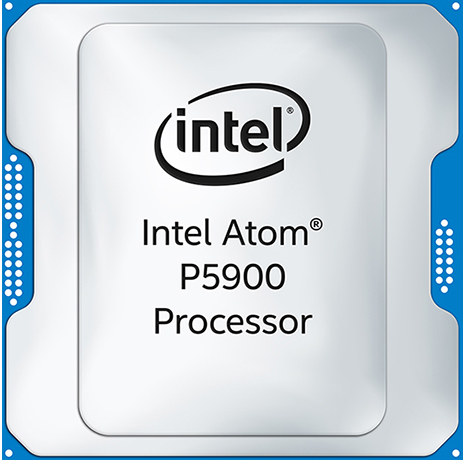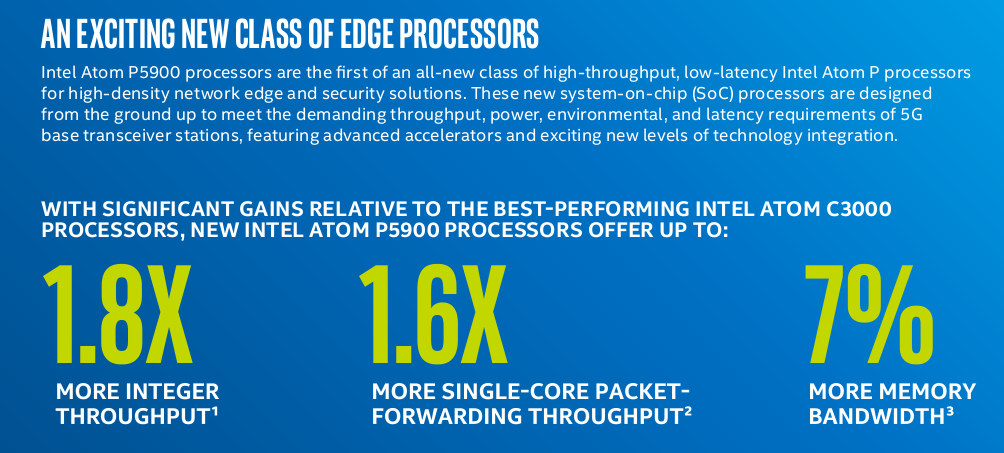Intel may have given up on developing 5G modems for mobile devices, but the company will still be participating in the ramping up of 5G technology by focusing on 5G infrastructure instead.
So the company has just introduced the Atom P5900 “Snow Rigde” processor family designed for 5G wireless base stations requiring “high throughput, low latency processing for high-density network edge and security solutions”. The 10nm chips are offered with 8 to 24 cores based on the Tremont micro-architecture.
There are four Atom P5900 “Snow Ridge” processors so far:
- Intel Atom P5921B 8-core processor @ 2.20 GHz with 9MB cache
- Intel Atom P5931B 12-core processor @ 2.20 GHz with 13.5MB cache
- Intel Atom P5942B 16-core processor @ 2.20 GHz with 18MB cache
- Intel Atom P5962B 24-core processor @ 2.20 GHz with 27MB cache
P5912B supports up to 64GB ECC DDR4 memory, and other parts can handle up to 128GB RAM. The rest of the features are identical for all four SKUs:
- SATA – 16x SATA interfaces
- Networking – Integrated Intel Ethernet 800 Series technology delivering up to 100 Gbps throughput; up to 440 Gbps network switching connectivity; Intel QAT support for 5.6x faster secured network communication compared to software
- PCI – Support 16x PCIe 3.0, 16x PCIe 2.0 in x4,x8 and x16 configurations. 32 PCIe lanes max.
- USB – 4x USB 2.0, 4x USB 3.0
- Security & Reliability – Intel AES New Instructions, Secure Key, Intel Trusted Execution Technology, Execute Disable Bit, Intel Boot Guard
- Package Size – 47.5mm x 47.5mm
- Temperature Range – -40°C to 85°C
Compared to the previous Intel Atom C3000 Denverton server SoC, Atom P5900 Snow Ridge processor delivers 1.8 times more integer throughput (in SPECrate*2017_int_base), 1.6 times more single-core packet forwarding throughput (tested with DPDK L3FWD-ACL) and 7% more memory bandwidth as measured with STREAM_triad benchmark.
The company expects the new Atom P processors to help them become the leading silicon provider in base stations by 2021. Visit the product page and/or check the product brief for more information.

Jean-Luc started CNX Software in 2010 as a part-time endeavor, before quitting his job as a software engineering manager, and starting to write daily news, and reviews full time later in 2011.
Support CNX Software! Donate via cryptocurrencies, become a Patron on Patreon, or purchase goods on Amazon or Aliexpress






